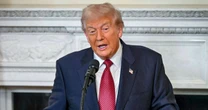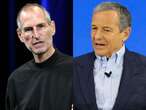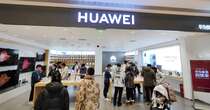As Brian Niccol assumes the CEO spot at Starbucks today, it’s hard to overlook the leadership lessons this high-profile turnover offers. Stakeholders and employees eagerly await what’s to come as the beloved coffee brand sits at the crossroads of its legacy as a market creator and its future growth amid a shifting consumer landscape.
Stock prices for the company rose 25% on the day Niccol was named incoming CEO, and news feeds are littered with projections of what’s to come for a brand that’s grasping at an opportunity to regain clout with its third incoming CEO in three years.
Niccol comes to Starbucks after steering Mexican restaurant chain Chipotle through a bumpy series of foodborne illnesses in the 2010s. On Niccol’s watch, Chipotle revenue improved markedly, the company’s brand rebounded, overall store operations improved, and employee benefits were given a facelift.
With a $113 million pay package and a cushy super-commute by private jet from his California home to Starbucks’ Seattle headquarters, Niccol is tasked to help Starbucks evolve and innovate in nearly every area from culture to product to bottom line, after the last few years of a somewhat bumpy trajectory amid ongoing negotiations with labor unions, operational headaches around a complicated (and inefficient) product list, and speculation on the company’s environmental footprint.
The importance of reading the room
When Satya Nadella took on the CEO post at Microsoft one of the first questions he asked was “Why should Microsoft exist?” That, says MIT’s Deborah Ancona, is a great example of a leadership strategy called “sensemaking.” “You need to understand the company culture, its business model, its customers,” says Ancona, founder of the MIT Leadership Center at the MIT Sloan School of Management, where she also teaches management and organizational studies.
In Niccol’s case, while his time at Chipotle might inform how he operates at Starbucks, his immediate ability to listen and observe will pay off long-term in his new post at Starbucks. “Even if you have been successful at one company, there is a need to learn, or ‘sensemake,’ about your new place,” says Ancona. “Though Nadella became CEO after working at Microsoft for many years, he still started by doing listening tours and interviews with employees and customers.”
If Niccol can begin his time at Starbucks with a period of sensemaking, whatever comes beyond his initial period of discovery will have a greater impact and more thoughtful strategy behind it. It will also demonstrate a willingness to learn and be flexible, exploring the possibility of different perspectives and outcomes as he sets up a new vision for the company, its stakeholders, employees, and customers.
Whose CEO is he, anyway?
There is a difference between being a CEO’s CEO and an employee’s CEO, says Chris Kayes, who teaches management at George Washington University School of Business. The former, he says, might be more concerned with access to capital, growth, and stock price, while the latter might lean more toward tackling culture and smoothing the wrinkles in the company’s labor woes.
Ideally, Niccol can leverage a brand of leadership that allows him to do both.
“My overall take is that Niccol is sort of the Ryan Reynolds CEO,” says Kayes. “They are willing to pay him a premium price, but need him to deliver at the box office.” To that end, says Kayes, Niccol will need to position Starbucks just so, with a leadership strategy that potentially addresses employee turnover, union negotiations, brand positioning, a streamlined product offering, and much more.
Kayes points to examples of General Motors CEO Mary Barra and former CEO at Costco Craig Jelinek, who have each managed to make employees feel heard while mastering bottom-line financials. “Mary Barra is a good example of someone who was seen as accessible and in touch with what the needs are even if she can’t address one particular issue,” says Kaye. “When Costco store employees tried to unionize, the message was, ‘We can do better.’ Responses like that are seen as sympathetic to the average worker’s position. A large number of Starbucks employees are hourly earners. They’ll move jobs for more money.”
Niccol will need to make sure front-line employees feel heard, says Kayes. Otherwise, he’ll constantly have a labor problem, which will translate to a problem with service in their core business: getting premium coffee in customers’ hands, on time, exactly how they like it.
Leadership that’s good for everyone
Similar to Chipotle, Starbucks draws employees for all sorts of reasons, especially since Starbuckss’ brand has gone from a locally-owned, globally-sourced outfit at its founding to a present-day corporate behemoth that faces constant supply chain hurdles.
Christopher Michaelson co-wrote Is your Work Worth It? and teaches business ethics at University of St. Thomas and New York University’s Stern School of Business. He says Niccol will also need to tailor his leadership style to the “job-career-calling” work orientation. In other words, some jobs just pay the bills, and others are a stepping stone to a bigger, higher paying job, while still others carry a more meaningful role in a person’s life. “There are two ways to have a calling at Starbucks,” says Michaelson. “One way is to make it your day job and then fund your garage band with your day job, hoping you make it big.”
In this case, the day job enables you to follow your dreams in your off-hours, cover the cost of health or fertility benefits, or pay for schooling. Others might see a job at Starbucks as a calling of its own. One, says Michaelson, that allows you to interact in your community, get involved in sustainability through responsible sourcing, and create experiences for others in similar ways. “If I were the leader of this company, I’d be thinking, ‘What can I do to satisfy each of these categories of employees in a way that preserves the neighborhood coffee shop feel that has become this corporate entity?’” says Michaelson.
To do that, he says, Niccol will have to acknowledge the privileges he and other executives in the organization are afforded, while considering what freedoms and policies other employees might benefit from, too. “The onsite staff have to have some sense of ownership and investment in the company, and they’ve also got to not be overworked,” says Michaelson. “He has to convince them that his leadership is not just good for him, but good for them, too.”









No comments